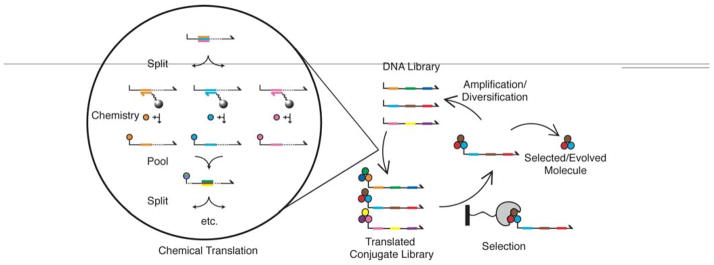Figure 1.
DNA Display. A library of ssDNA molecules (top) is chemically translated into synthetic compound DNA conjugates. The DNA library is split into sub pools by hybridization of 20 base codons to complimentary oligonucleotide anticodons that are immobilized on separate columns (orange, cyan, pink bars). A distinct chemical transformation is carried out on each sub pool, resulting in the covalent attachment of a chemical building block to the DNA (orange, cyan, pink balls). The library is pooled and then split based on the next coding region (green, brown, yellow bars), and distinct chemical transformations are carried out for each sub pool. The process is iterated until the entire DNA sequence is read. Each codon can exist at only one coding region. The translated library is subjected to selection for a function of interest (binding to the immobilized grey widget), DNA linked to binders is amplified and used as input for the subsequent round of chemical translation. The entire process is repeated until the library converges. Enriched molecules are identified by DNA sequencing and assayed for function as pure compounds.

